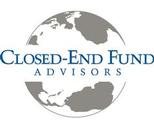Summer 2015 has been anything but quiet for stocks and bonds. We were surprised with the increased volatility in August.
Despite what we have read and seen in the financial news outlets, the US is having one of its best periods of employment growth, housing prices are trending higher, households and companies generally have less debt.
The S&P 500 is up about +200% total return since the March 9, 2009 market lows, as of September 21.

Shortsighted
However, some investors seem concerned with a Fed Funds rate of 0.50%, which is pretty shortsighted in our opinion.
We would need to see rates above 3% to have them potentially drag on the economy (based on current GDP and inflation figures).
We believe getting the rate to 1.25%-1.5% in 2016 is important and a slow rise in rates can be positive for the economy and markets.
China Syndrome
The week of August 24 the US markets lost about -11% from the recent highs. Why?
There were concerns on China and how it will impact the global economies.
We noticed China imports/exports account for less than 1% of US GDP. While China stocks had a really rough few months, they are still up over 30% in the past year.
In the 1980s, Japan imploded (then the 2nd biggest economy) and the US found a way to keep growing.
China is not in a recession, many economists surveyed expect China to produce 4%-6% GDP growth over the next few years.
Our Approach
We think it is important to note we have not made any investment changes dues to recent news or the market pullback.
Instead, we seek to build diversified portfolios with sustainable distributions which many of our clients live on.
We do this by blending Net Asset Value (NAV) performance for funds and sectors with discount trends and historical levels.
Closed-End Funds
The distribution sustainability review for closed-end funds (CEFs) is typically harder, but we blend our data resources with the history of each fund sponsor and look at a fund’s holdings and its sector and NAV yield vs. NAV total return.
We also monitor what the manager will have to hit to meet the board’s current policy.
We have been reminding CEF investors that the Fund’s policy is not a promise like with a regular bond purchase.
Dividends
From September 2014 to September 2015 there were 521 CEFs that paid monthly or quarterly distributions, according to our research.
Some 258 (49.5%) changed their amount to shareholders; 103 were increases and 153 were decreases.
Right Side
Part of beings a successful CEF investor, in our experience, is being on the right side of those changes. It often impacts discounts and is part of your account’s total return.
CEFs and Business Development Companies (BDCs) are still historically cheap across most measures.
We have recently created a two-page PDF file with 10 years of CEF/BDC performance and discount levels.
You can find it on the “Investor Resources” page of our website. We will keep it updated quarterly.
Track Record
In the past 20 years CEF discounts have average about -4%. Currently the -10% discount seems like a great time to add exposure to CEFs and a good time to be building or adding to your CEF/BDC portfolio.
We recommend you stay diversified and generally overweight beat up sectors and underweight sectors when they feel expensive after strong gains.
The two sectors we think have the best upside in the near-term are debt-BDCs and master limited partnerships (MLP) CEFs.
Photo Credit: Neil Kremer via Flickr Creative Commons



